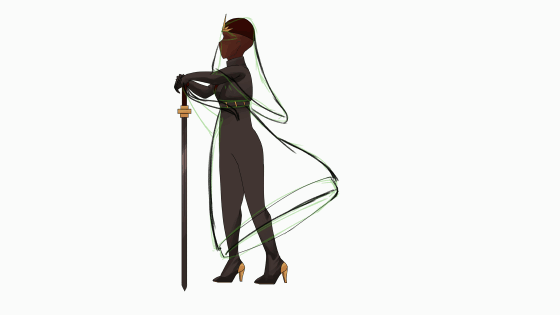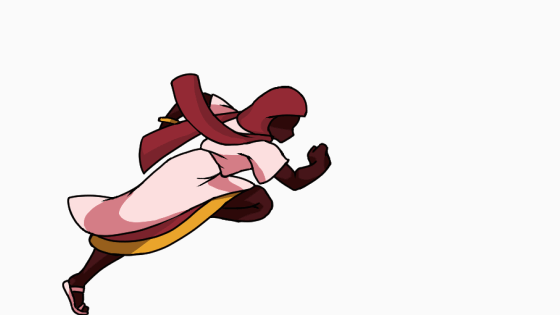

Turup
An 'at your own pace' simple maths game.
Turup is a developmental maths game in a North-African inspired setting, wherein the player uses a card game to expand their skills to join the illustrious Mage Guild.
Traverse the city, encounter strangers and help them in their struggles or challenge them to the a card game.
Click here to play

The Origin
(aka Back in My Day')
The foundation of this project is found in the Somali variant of the card game 'Cassino', a game that I regularly played growing up in my childhood and had a prominent place in my home as a child. So much so that when speaking of the game, we simply called it 'turup' (eng. Cards) and continue to do so (hence the name of the project. The game likely came to Somalia during the colonisation in the 1800s and is still fairly popular to this day and was taught to me by my mother and older sister.
From the beginning, I wanted Turup to be a game accessible to all ages whilst demonstrating my skills as both an artist and a UI designer. As pre-production progressed, I couldn't help but want to aim the game toward younger audiences, where players were encouraged even in the face of making mistakes and didn't restrict them for doing so.
The Aesthetic
(aka I was left unsupervised)
In my desire to mimic the support I was given as a child and give form to my nostalgia, I ended up making Turup almost into a monument to my native culture and it's history.
An example of this is the Lighthouse right at the start of the game, the first thing the player sees upon hitting play. This lighthouse is an observational paining of a well known Somali landmark; known as the 'Pearl of the Indian Ocean', the Mogadishu Lighthouse is one of the remnants of the Old Harbour and has great cultural significance as a surviving legacy of my home.

The games more ornamental assets tend to pull from islamic geometric art. The Pause Menu is inspired by mashrabiya, using similar muslim geometric patterns in it's design and contruction.
The further in the city you go, the more ornate the designs become. Commonly, when my heritage is depicted the beauty in it is often forgotten. It often feels that it doesn't get to be ornate, not in the way that older western civilisations are (think, rococco/baroque/etc). Given Somalia's history as having been colonised by Italy, I decided to pull some references from there, which is why there are some minor references to baroque/rococco styles.
Designing The Characters
(Aka I checked my own closet)
The main cast (all women) tend to wear either baati or dirac, traditional dresses with dirac being the more formal of the two. Both tend to have the same silhouette, long, loose fitted dresses that are generally one size fits all (the excess fabric is either tucked into an underskirt or held in place with a belt). As a result, the dresses are more well known for their patterns and their differing colours. Admittedly, I pulled back on using patterns on the characters heavily as I worried they would be too distracting from the dialogue text box (which is translucent) and might cause readability issues.

The only character not wearing a baati or dirac is the Princess/guild leader, who wears a niqaab and cabaya, a character who is well known in the city for enjoying her privacy and preferring to focus on her work.



Intisar, the protagonist wears the simplest design of the cast. The mood board above uses images actually taken from mine, my mother and my sister's closets. I even referenced, my sister's wedding dress, wedding henny/jewelry and the dress I wore to the event.

The Cards
(aka I committed to the bit)
Given the game's central mechanics was built around a card game, I knew I couldn't just get a free asset pack. So I sat down and sketched out my own deck. The fifty-two cards were going to stay the same but I figured, since I was already making cards from scratch, I might as well make new suits instead of using the standard four (I left Diamond and Clubs unsundered). At which point I realised I was going to have make the face cards so I might as well design new ones. And since the faces and the suits were going to be different, then I might as well make new ace cards-- (are you starting to see a pattern?
To put simply, I sillied too close to the sun and somehow(??) survived!- To the left you will find the face cards, the aces and the '10' card of each suit and the card game mood board.
One of the ways I iterated on the card game when I was adapting it was to add a buff system; a simple solution to the question "What incentivises players to not rush straight to the next boss/card game?"
The way the gameplay loop is structured is: explore > meet a stranger > help them with their problem/solve their puzzle > unlock a buff > repeat.
The buff system is fairly simple, at the start of every game, the player can either choose a passive buff or an active buff that can only be used once in the entire game. With nine buffs in total and only four card games in Turup, collecting the cards isn't an unending grind and it allows for a measure of re-playability so the player can use cards they didn't get a chance to use prior.
In keeping with the card theme, I decided to pull from the Major Arcana to make the buff cards. The full selection of cards can be seen below as well as a video of the pause menu's card library where the player can reference what the cards do in case they forget/skipped the explanation.

Above: Showcase of pause menu and card library (UI animations coded in using C# and the DoTween Library for Unity).

Above: The button to select when Match Cards (minus indicative text)
The UI Art
(Aka Fractals and Rococo)
Using Fractal art and islamic imagery as reference, I created a series of UI art elements that attempted to combine the two. At first thought, you'd think there isn't a lot of overlap in the two aesthetics but there's a lot of shape language that copies over in the cases of curves and ornate designing. This was most exemplified during the Spanish Reneissance which was brought to an end by the rise of the Spanish Inquisition (there's a reason no one expected them).
Above: Collection of UI elements used across the game.
























































































